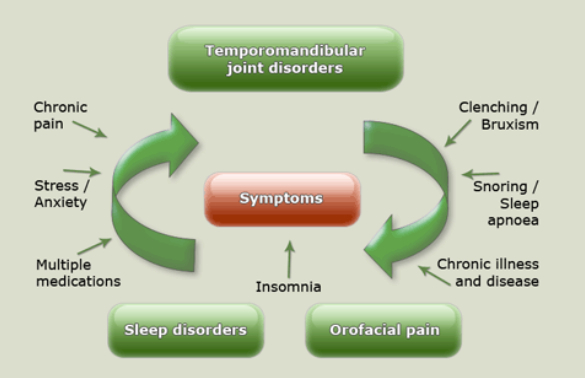If you have ever suffered from headaches, TMJ pain, facial pain, intra-oral pain (such as recurrent mouth ulcers, a tooth requiring extraction or abscess, chronic sinus infections, or impacted wisdom teeth), snoring, or obstructive sleep apnoea, or you have met or live with someone who does, you will know just how destructive and debilitating these conditions can be to our quality of life. And not just to the person with the condition, but also to those people around them.
The complex array of symptoms and disability a person suffers when in pain, often can create the feeling that their condition is too difficult, frustrating, and elusive to treat. Often people may ‘give up’ as they believe that no one understands or is listening to their symptoms, or they have already seen so many health practitioners with no resolution.
One thing you can’t hide – is when you’re crippled inside.
― John Lennon
The human body and mind are a finely tuned dynamic and interactive machine and as such, its daily operations are reliant upon many of its other functions that may at first glance appear completely unrelated. By assessing not only a patient’s presenting symptoms, but also the multitude of contributors that can play important roles in pain experience, we are able to treat the person as a ‘whole’ rather than a ‘symptom’.
Factors such as sleep quality, stress, lifestyle, diet, self-management techniques, depression, medications, other diseases and illnesses, and many other important issues all need to be considered in any diagnosis. And more recently, the large increase in our connection with and obsession with technology is contributing to many pain conditions and chronic poor sleep patterns. In many cases, working closely with other health personnel and specialists as a team in a multidisciplinary structure is paramount to improving the health and well being of a person. Strangely, this is still a relatively new concept amongst many health professionals.
TMJ Disorders (TMD), Orofacial Pain, and Sleep Disorders are 3 conditions that are considered to be “multifactorial” in both adults and children. That is, each disorder has many factors that contribute to or can cause the onset of symptoms in a patient. One disorder can, and often does, occur simultaneously with one or both of the other disorders. Therefore, if any part of the TMD, Orofacial Pain, or Sleep Disorder is left untreated, a cycle of symptoms or a ‘continuum’ occurs.

Oral Medicine and Oral Surgery are two other areas of medicine and dentistry that interact with and in many cases are included in this continuum and therefore cannot be excluded from true multidisciplinary treatment. If a person is not assessed and treated using this ‘continuum’ philosophy and approach, they will unfortunately never reach ‘Maximum Medical Improvement’ as the cause of each disorder has not been fully addressed and treated.
Furthermore, many people are offered dental orientated ‘tooth approach’ treatments that are often advocated and encouraged for Orofacial Pain and TMJ complaints. This often includes dental splints, but some claim that orthodontics and even complex and very expensive treatment such as crowns, bridges, and implants are also required. Unfortunately we have seen people spend many thousands of dollars on dental treatment that played no contributing part in the presenting pain and TMJ complaint. More often than not, Orofacial Pain and TMJ Disorders do not have anything to do with the teeth (unless there is actual dental disease present), and therefore dental treatments are only a small portion of the required overall management plan. Only after pain reversal, appropriate medical management, and TMJ stabilisation may long-term dental treatments be required, and then only in specific cases.
Our philosophy in everything we do is affordable, conservative-based management options and appropriate long-term treatment plans tailored to the individual person to improve their quality of life. This is to assist as many people as possible to be able to receive the scientifically validated and best medical-based treatment they require, rather than treatment only the wealthy can afford, and even more importantly, treatment that they actually need.
We do not promise that we can cure everybody, but by providing a comprehensive “Treatment and Management Plan” rather than just a “Treatment”, our aim is to improve the quality of life in every person we treat.

